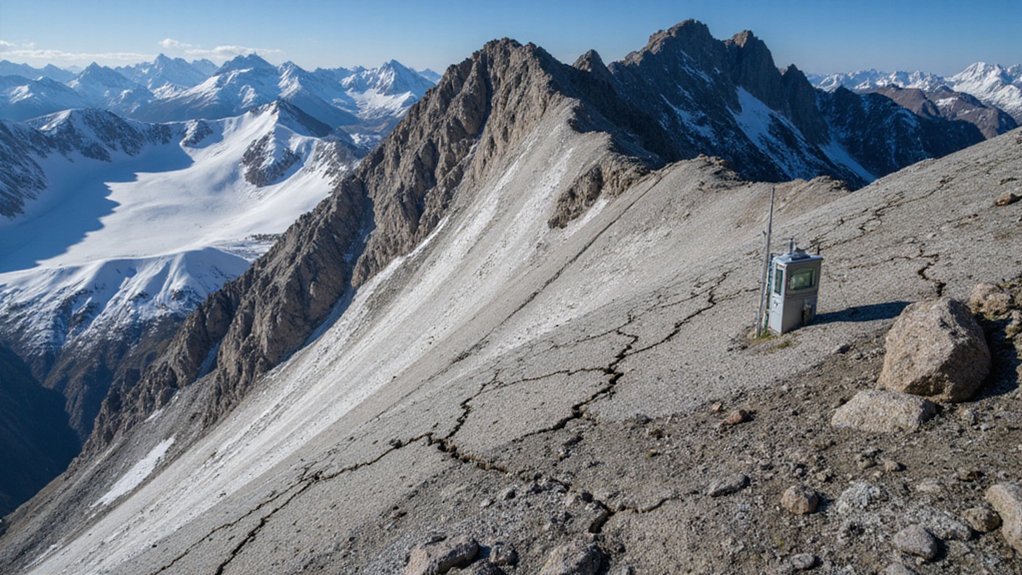While the world debates climate change, the Swiss Alps are literally falling apart. Permafrost temperatures in these mountains have jumped 0.8°C in just ten years, hitting levels that make scientists’ thermometers sweat. The frozen glue holding these peaks together is melting, and nobody seems particularly shocked anymore.
The Swiss Alps are melting from within while we debate whether it’s happening.
The numbers are stark. Between 6-8% of Swiss territory sits on what’s fundamentally a ticking time bomb of unstable ground. That permafrost used to be rock-solid, literally. Now it’s more like frozen pudding left out in the sun. Persistent global warming, those charming heatwaves, and winters that feel more like extended autumns have all conspired to create this mess.
Here’s the thing about thawing permafrost: it doesn’t just quietly disappear. It takes chunks of mountain with it. Rockfalls, landslides, mudflows – pick your poison. The uptick in these events isn’t subtle. Roads, cableways, entire communities built below these zones are playing a very expensive game of dodge-the-debris.
Swiss research institutions are monitoring this slow-motion catastrophe with ground sensors, satellites, and instruments measuring rock glacier velocity. Yes, that’s a real job – watching rocks move. They’re tracking surface deformation and mapping hazard zones, because apparently we need data to confirm that melting mountains are problematic. The acceleration becomes particularly dramatic when ground temperatures approach 0°C, creating a cascade of instability that ripples through entire mountain faces.
The economic hit? Brutal. Tourism infrastructure faces constant threats, insurance companies are having mild panic attacks, and local governments are hemorrhaging money on warning systems and mitigation efforts. Mountain recreation economies, once thought recession-proof, are discovering that geological instability trumps market forces. The situation mirrors broader patterns where Alpine glaciers could vanish entirely by century’s end, leaving these regions fundamentally transformed.
Future projections paint an even grimmer picture. If current trends continue – and let’s be honest, they probably will – permafrost warming accelerates. Engineers are scrambling to develop slope stabilization techniques while policymakers debate new building codes. Early warning systems are getting upgrades, though it’s unclear if “run faster” counts as technological innovation.
The Swiss Alps, that picture-perfect postcard destination, now doubles as a real-time demonstration of climate consequences. While tourists snap photos, the mountains underneath are quietly, persistently, falling apart.
References
- https://eos.org/editors-vox/rock-glacier-velocity-monitoring-permafrost-amid-climate-change
- https://www.swissinfo.ch/eng/glaciers-permafrost/un-weather-agency-expects-new-temperature-record-soon/89422799
- https://www.conflingo.no/en/news/2025-06-18/swiss-alpine-permafrost-reaches-record-high-temperatures
- https://www.swissinfo.ch/eng/climate-solutions/what-is-permafrost-and-why-is-it-a-threat/88971054
- https://www.swissinfo.ch/eng/climate-solutions/melting-permafrost-threatens-mountain-regions-what-can-be-done/88952465








